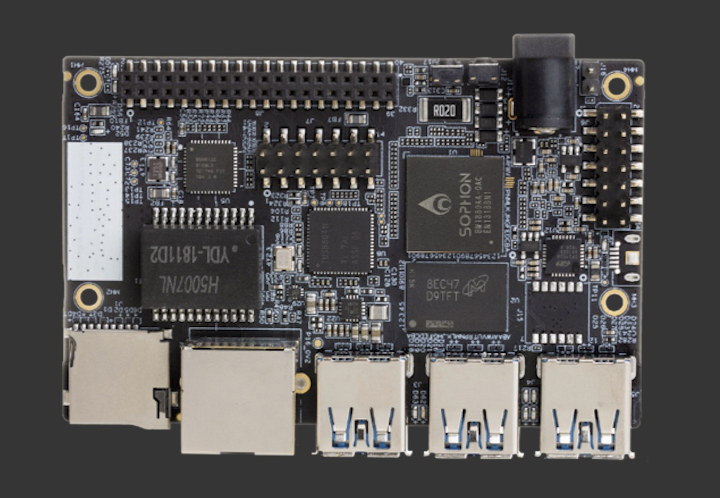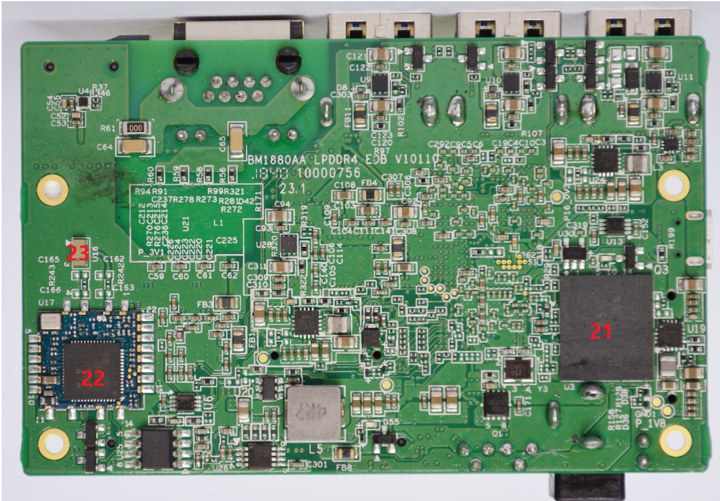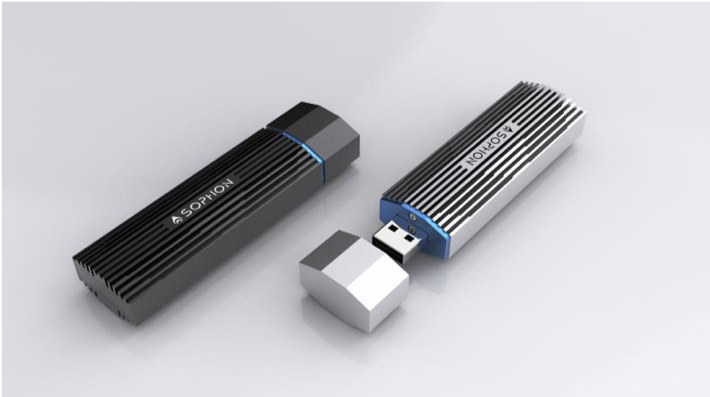Bitmain, a company specializing in cryptocurrency, blockchain, and artificial intelligence (AI) application, has just joined Linaro, and announced the first 96Boards AI platform featuring an ASIC: Sophon BM1880 Edge Development Board, often just referred to as “Sophon Edge”.
The board conforms to the 96Boards CE specification, and include two Arm Cortex-A53 cores, a Bitmain Sophon Edge TPU delivering 1 TOPS performance on 8-bit integer operations, USB 3.0 and gigabit Ethernet.

Sophon Edge specifications:
- SoC ASIC – Sophon BM1880 dual core Cortex-A53 processor @ 1.5 GHz, single core RISC-V processor @ 1 GHz, 2MB on-chip RAM, and a TPU (Tensor Processing Unit) that can provide 1TOPS for INT8,and up to 2 TOPs by enabling Winograd convolution acceleration
- System Memory – 1GB LPDDR4 @ 3200Mhz
- Storage – 8GB eMMC flash + micro SD card slot
- Video Processing – H.264 decoder, MJPEG encoder/decoder, 1x 1080p @ 60fps or 2x 1080p @ 30fps H.264 decoder, 75fps for FHD images
- Connectivity – Gigabit Ethernet(RJ-45), Wifi, Bluetooth
- USB – 3x USB 3.0 for camera, U-disk..
- I/O Expansion – 40-pin 96Boards low-speed expansion header including 2x I2S audio interfaces among others
- Power Supply – 12V/2A
- Dimensions – 85mm x 55mm (96Boards Consumer Edition)
One interesting aspect is that they felt the need to mix Arm and RISC-V architectures in this chip, I’m just not sure why..

The Bitmain Sophon Edge developer board runs Linux and supports DNN, CNN, RNN, and LSTM operations and models via its TPU and with the help of various tools including:
- BMNet: Bitmain Compiler which can convert supported AI models to internal format accelerated by Sophon TPU.
- ONNC: ONNX Compiler which can convert ONNX format to internal format accelerated by Sophon TPU
- Quantization Tool: Convert FP32 to INT8 and support calibration function
The board also supports modules for Arduino and Raspberry Pi, and enables low cost & low power DL/ML applications such as facial detection and recognition, facial expression analysis, object detection and recognition, vehicle license plate recognition, voiceprint recognition, etc. Supported frameworks include Caffe, ONNX, Pytorch, and Tensorflow. Lots of hardware and software documentation is already available on 96boards website, but not the Linux image just yet.
Sophon Edge can be reserved for 899 CNY in China, or $129.99 to the rest of the world. However it’s unclear when it will ship. You may also be interested in this link that details more Bitmain chips and developer products including an Edge AI module & USB AI compute stick both powered by BM1880, as well as some AI server products.


Jean-Luc started CNX Software in 2010 as a part-time endeavor, before quitting his job as a software engineering manager, and starting to write daily news, and reviews full time later in 2011.
Support CNX Software! Donate via cryptocurrencies, become a Patron on Patreon, or purchase goods on Amazon or Aliexpress




‘..dual core Cortex-A53 processor @ 1.5 GHz, single core RISC-V processor @ 1 GHz..’
I guess that could be an interesting aarch64 / risc-v port machine.
I don’t quite understand why one would mix the two architecture in a single chip. Do you have any idea? For example why not using a Cortex-A53 @ 1.0 GHz for the single core chip. So there must be specific benefits of using RISC-V architecture in this case.
I would guess that the RISC-V core was what they had first as part of the TPU, running some kind of firmware. In the past, one would have licensed a tiny customizable ARC, Xtensa, NDS32 or a Cortex-M core without talking about it, Cortex-A would be an odd choice here. These days using RISC-V by itself is a selling point because of the hype around the architecture, so talking explicitly pointing out that core gives them free advertising.
To get from that design to a Linux SoC, they could have added RV64GC cores instead of Cortex-A53, but that would have likely made it a much worse product, in particular on the software side.
I wondered the same. I think Arnd’s explanation makes the most sense.
i thought 96Boards CE specification prevented board makers from adding ethernet in this non-extended format.
and i don’t see any high-speed expansion connector
I was surprised as well. Maybe they finally figured how stupid an idea it was and relaxed the rule.
Also gitbook cnx
https://sophon-edge.gitbook.io/project/overview/edge-tpu-developer-board
Bitmain are also a Silver membership level of Risc-v.org, could that be why they included a risc-v core?
But how much GH/s?
they’re trying to do pre-orders for 2019. this is a beta version if anything.